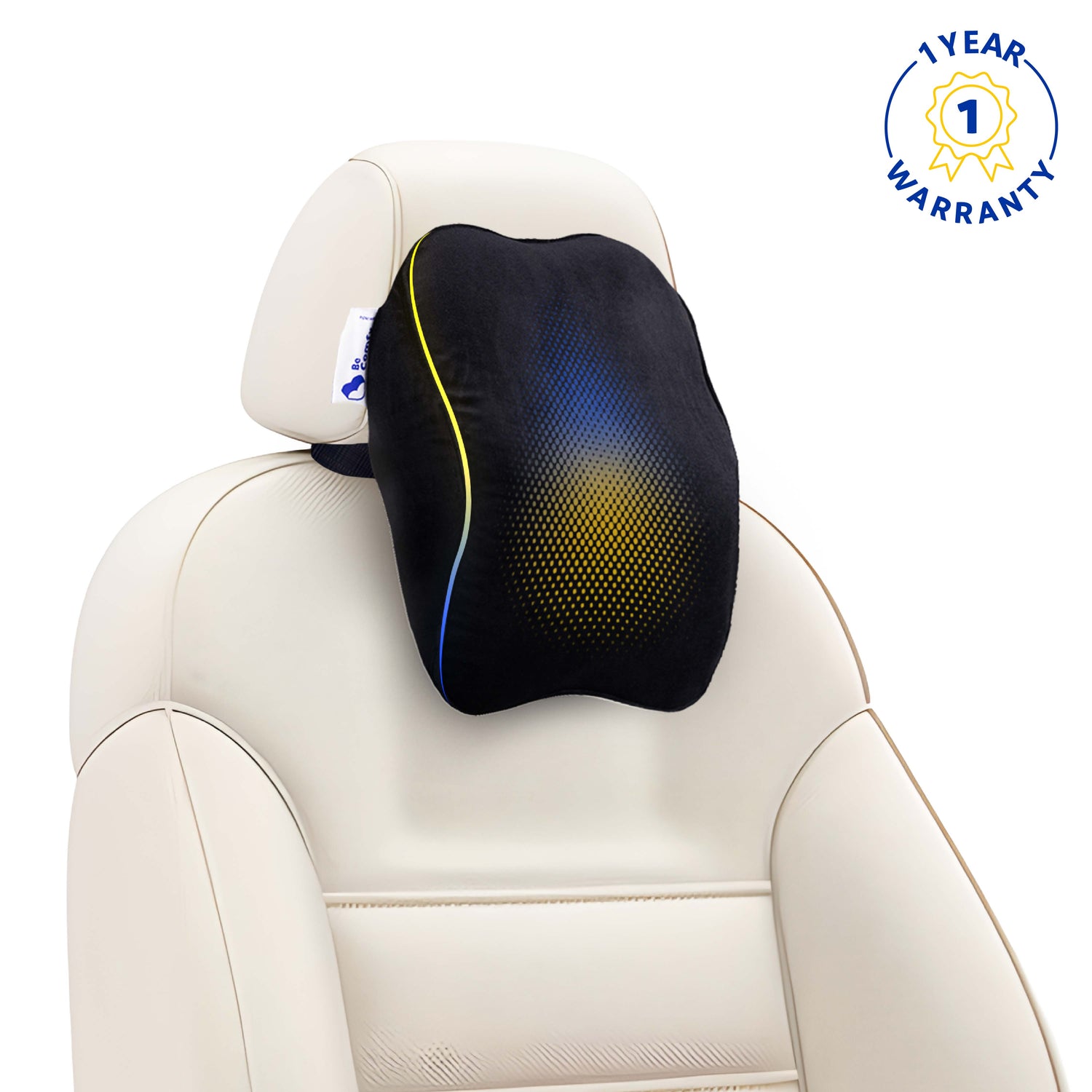Is 'Text Neck' Ruining Your Spine? How to Correct Forward Head Posture
Share
We live in a digital world, constantly looking down at smartphones, tablets, and laptops. While these devices connect us, they might also be contributing to a modern postural problem often dubbed "text neck" – more formally known as forward head posture (FHP). This subtle but persistent shift in how we hold our heads can lead to a cascade of issues, from nagging neck pain to broader spinal health concerns.
If you frequently experience neck stiffness, upper back aches, or headaches after spending time on your devices, forward head posture could be the culprit. Let's delve into what FHP is, why it's detrimental, and practical steps you can take to correct it.
What Exactly is Forward Head Posture?
Ideally, when sitting or standing tall, your ears should align vertically over your shoulders, hips, knees, and ankles. This alignment represents a neutral spine, where the head's weight is balanced efficiently over the body.
Forward head posture occurs when your head drifts forward, out of alignment with your shoulders. For every inch your head moves forward, its effective weight on your neck and upper back muscles increases significantly. Think of holding a bowling ball close to your body versus holding it out at arm's length – the further out it goes, the more strain you feel. This constant strain is the essence of FHP.
Why is Forward Head Posture a Problem?
This seemingly minor misalignment can have several negative consequences:
- Neck and Shoulder Pain: The muscles in your neck and upper back are constantly overworked trying to support the forward-positioned head, leading to pain, stiffness, and trigger points.
- Upper Back Strain: The upper back often rounds forward to compensate for the forward head position, straining the muscles between the shoulder blades.
- Headaches: Tension in the neck and shoulder muscles can radiate upwards, contributing to tension headaches.
- Reduced Mobility: Over time, FHP can lead to stiffness and reduced range of motion in the neck.
- Compromised Breathing: A slumped, forward posture can compress the chest cavity, potentially restricting full, deep breaths.
- Overall Poor Posture: FHP rarely exists in isolation. It often accompanies rounded shoulders and a slouched upper back, contributing to overall poor posture and its associated risks.
How to Spot Forward Head Posture
You can do a quick self-check:
- Wall Test: Stand with your back against a wall, heels a few inches away. Your buttocks, shoulder blades, and the back of your head should ideally touch the wall simultaneously. If your head doesn't easily touch the wall without tilting your chin up excessively, you likely have some degree of FHP.
- Side Profile Check: Ask someone to take a photo of you standing naturally from the side, or check your profile in a mirror. Observe the alignment of your earlobe relative to the midpoint of your shoulder. If your ear is significantly forward of your shoulder, FHP is present.
7 Steps to Correct Forward Head Posture
Correcting FHP requires a combination of awareness, stretching, strengthening, and ergonomic adjustments:
-
Increase Awareness: Simply being mindful of your head position throughout the day is the first step. Regularly check if your head is drifting forward while working, reading, or using your phone.
-
Adjust Your Screen Height: Position your computer monitor so the top of the screen is at or slightly below eye level. If using a laptop for extended periods, use a laptop stand and an external keyboard/mouse to elevate the screen. Hold your phone higher, closer to eye level, instead of looking down at it in your lap.
-
Practice Chin Tucks: This is a key corrective exercise. Sit or stand tall. Gently glide your chin and head straight back, as if making a double chin, without tilting your head up or down. You should feel a stretch at the back of your neck. Hold for a few seconds, relax, and repeat 10-15 times periodically throughout the day.
-
Perform Shoulder Blade Squeezes: Sit or stand tall with arms relaxed at your sides. Gently squeeze your shoulder blades together and down, as if trying to pinch a pencil between them. Hold for 5 seconds, relax, and repeat 10-15 times. This helps counteract rounded shoulders.
-
Stretch Your Chest: Tight chest muscles contribute to rounded shoulders and FHP. Stand in a doorway, place your forearms on the doorframe with elbows slightly below shoulder height. Gently lean forward until you feel a stretch across your chest. Hold for 30 seconds.
-
Strengthen Your Upper Back: Exercises like rows (using resistance bands or weights) help strengthen the muscles that pull your shoulders back and support an upright posture. (Consult a fitness professional for proper form).
- Optimize Overall Ergonomics: Ensure your entire workspace supports good posture. This includes proper chair height, desk height, and crucially, good lumbar support. A supportive cushion like the BeComfy Back Support helps maintain the natural curve of your lower back, providing a stable base that makes it easier to keep your head and shoulders properly aligned.
Conclusion: Reclaim Your Alignment
"Text neck" or forward head posture is more than just an aesthetic issue; it's a postural habit that can significantly impact your spinal health and comfort. By becoming aware of your posture, making simple ergonomic adjustments to your workspace and device usage, and consistently performing corrective exercises like chin tucks and shoulder blade squeezes, you can counteract the effects of FHP. Supporting your overall posture with tools like a good lumbar cushion further aids this process. Take proactive steps today to correct your head posture – your neck, shoulders, and spine will thank you.

